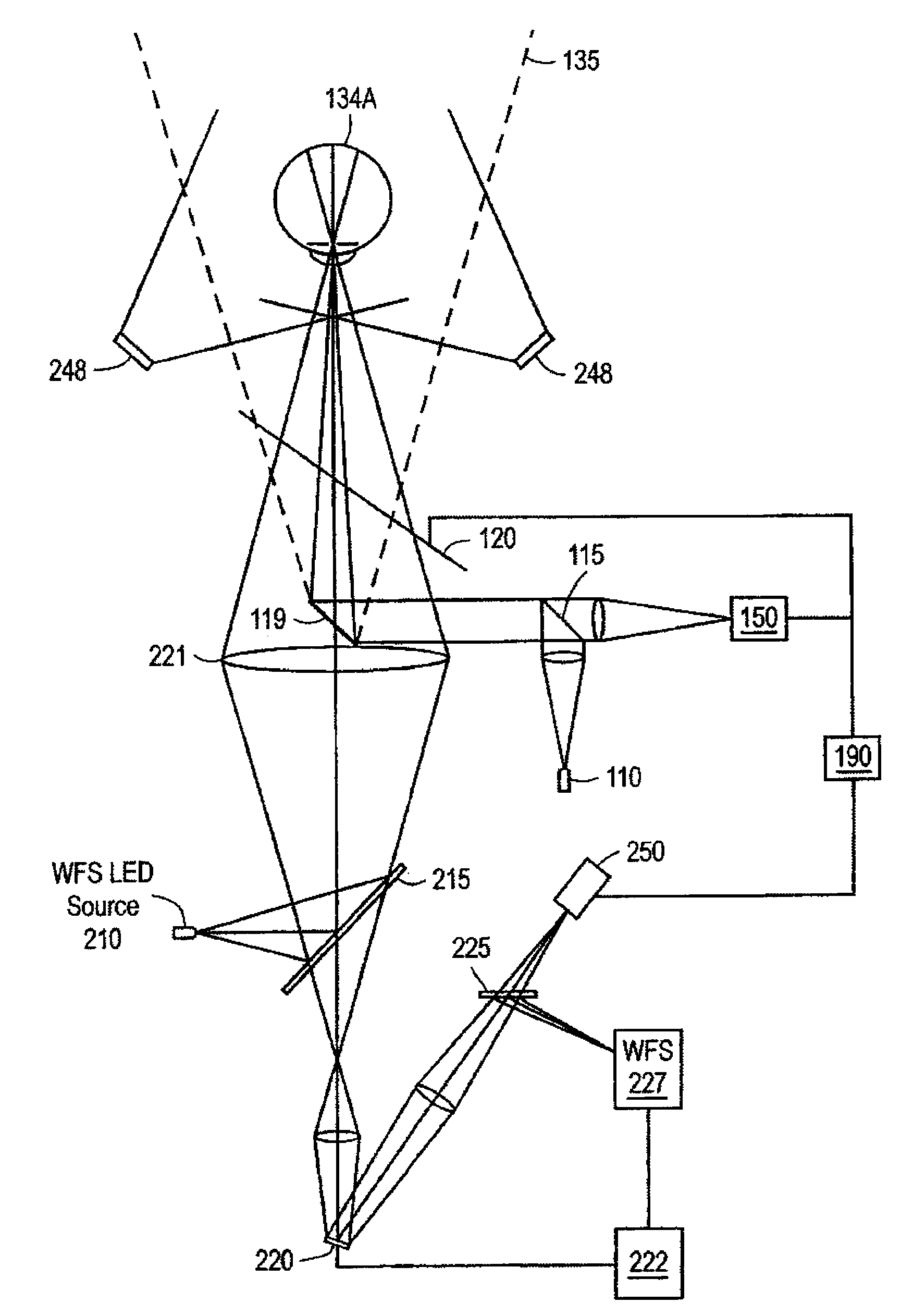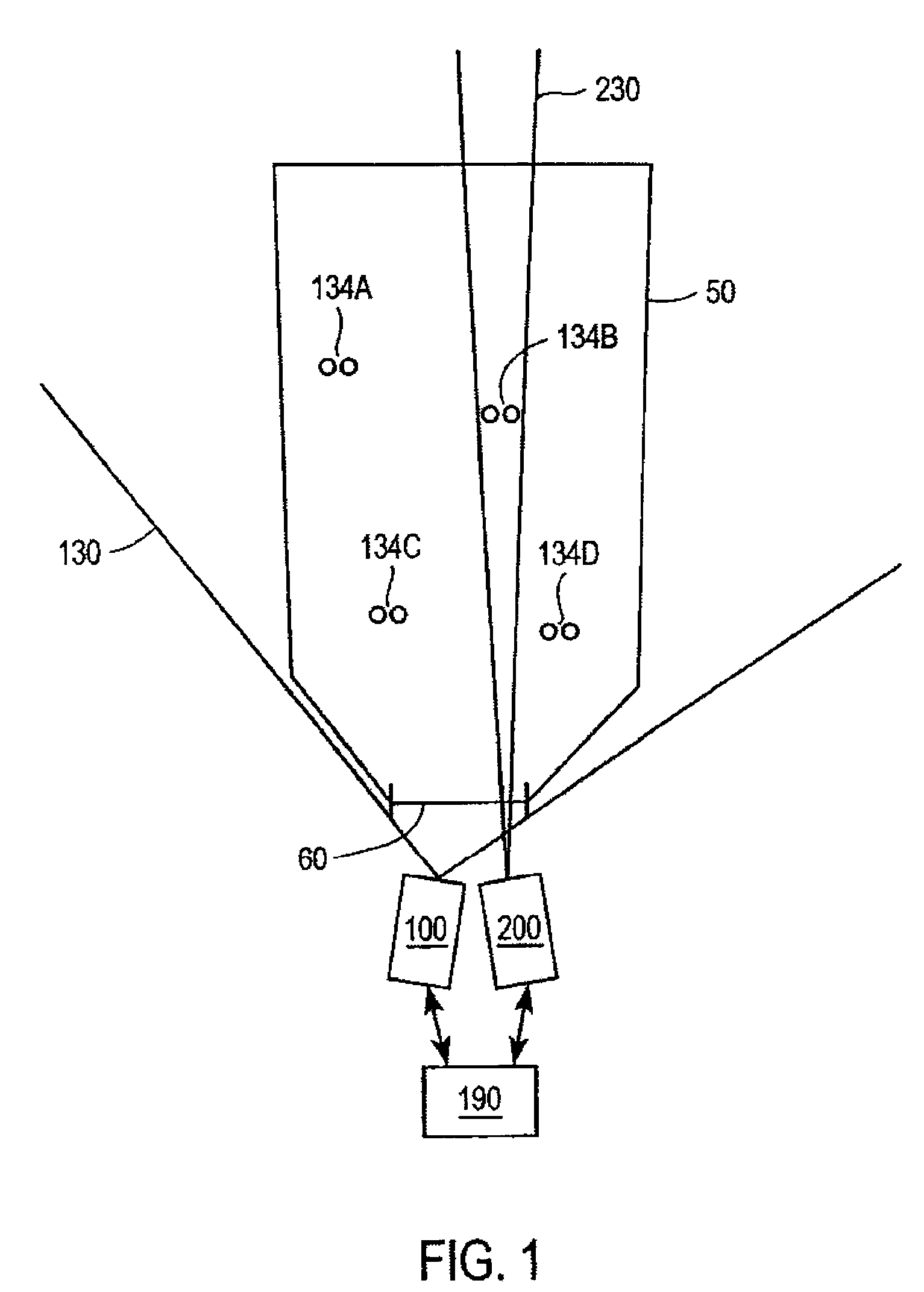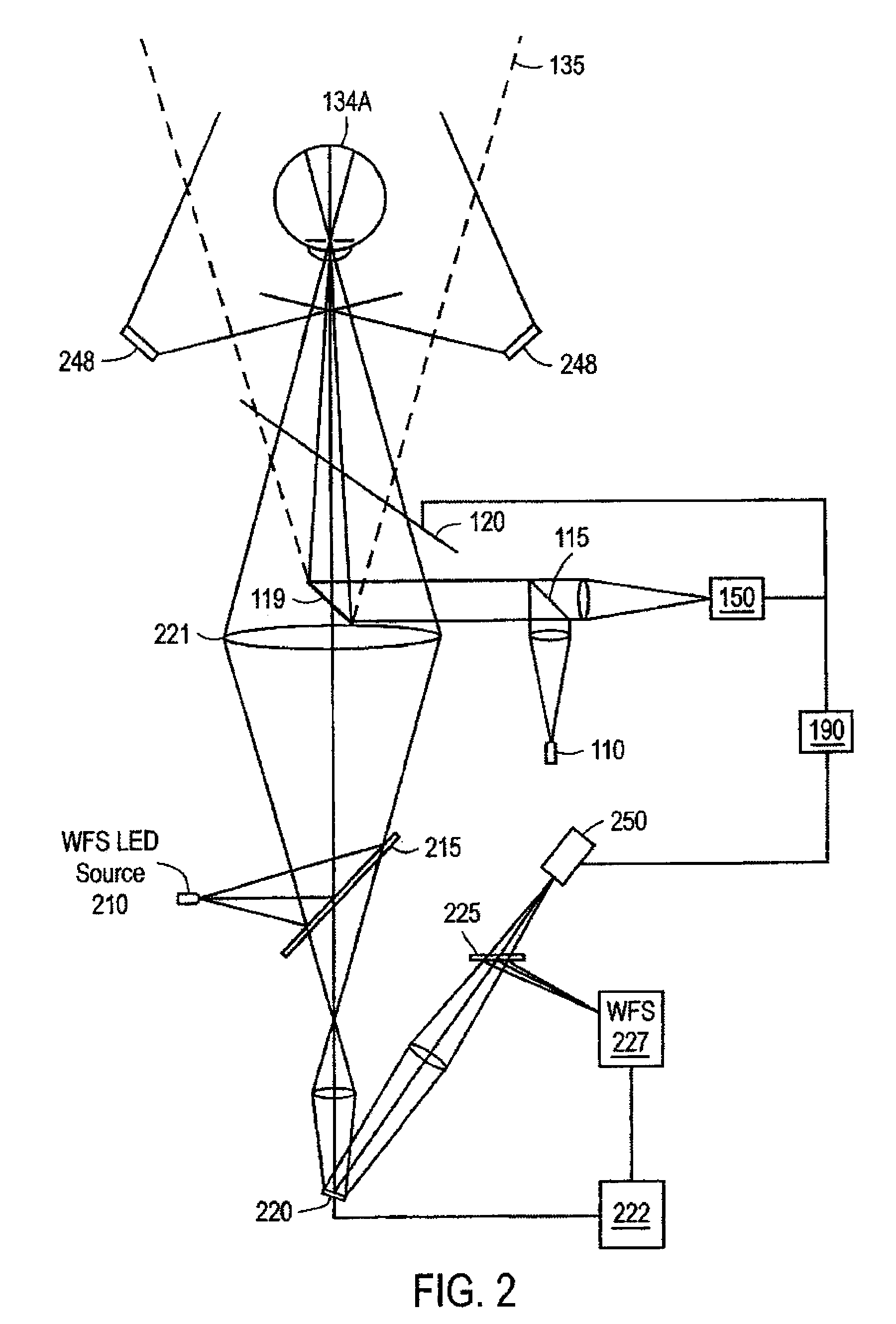Iris imaging using reflection from the eye
a technology of iris and reflection, applied in the field of human iris imaging, can solve the problems of 15 cm wide field of view, inacceptable spatial resolution, and significant worsening of situation at longer standoffs, and achieve the effect of prolonging the usable exposure tim
- Summary
- Abstract
- Description
- Claims
- Application Information
AI Technical Summary
Benefits of technology
Problems solved by technology
Method used
Image
Examples
Embodiment Construction
[0027]FIG. 1 is an illustration of an iris imaging system according to the present invention. The iris imaging system includes an imaging subsystem 200 and, optionally, an acquisition subsystem 100. The system is designed to capture iris images of many eyes 134 over a large capture volume 50, typically without the active cooperation of the subjects. In one application, the subjects are passing through a portal 60 (such as a doorway or metal detector), the capture volume 50 is the entranceway leading up to the portal, and the iris imaging system captures iris images as the subjects pass through the capture volume. In many applications, the capture volume can be defined based on a portal or other bottleneck for the flow of people. Examples include corridors, turnstiles, toll booths, elevator doors, escalators and parking garage entrances. Other examples include checkout lines or other queues, crosswalks, sidewalks and roadways.
[0028]This situation typically is “uncooperative,” meaning...
PUM
 Login to View More
Login to View More Abstract
Description
Claims
Application Information
 Login to View More
Login to View More - R&D
- Intellectual Property
- Life Sciences
- Materials
- Tech Scout
- Unparalleled Data Quality
- Higher Quality Content
- 60% Fewer Hallucinations
Browse by: Latest US Patents, China's latest patents, Technical Efficacy Thesaurus, Application Domain, Technology Topic, Popular Technical Reports.
© 2025 PatSnap. All rights reserved.Legal|Privacy policy|Modern Slavery Act Transparency Statement|Sitemap|About US| Contact US: help@patsnap.com



